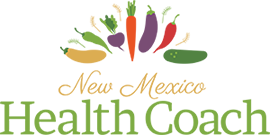Proteins are made up of amino acids. Think of amino acids as the building blocks. There are 20 different amino acids that join together to make all types of protein. Some of these amino acids can’t be made by our bodies, so these are known as essential amino acids. It’s essential that our diet provide these.In the diet, protein sources are labeled according to how many of the essential amino acids they provide:
A complete protein source is one that provides all of the essential amino acids. You may also hear these sources called high quality proteins. Animal-based foods; for example, meat, poultry, fish, milk, eggs, and cheese are considered complete protein sources.
An incomplete protein source is one that is low in one or more of the essential amino acids. Complementary proteins are two or more incomplete protein sources that together provide adequate amounts of all the essential amino acids.
For example, rice contains low amounts of certain essential amino acids; however, these same essential amino acids are found in greater amounts in dry beans. Similarly, dry beans contain lower amounts of other essential amino acids that can be found in larger amounts in rice. Together, these two foods can provide adequate amounts of all the essential amino acids the body needs.
Q: Is it true that complementary proteins must be eaten together to count as a complete protein source?
A: In the past, it was thought that these complementary proteins needed to be eaten at the same meal for your body to use them together. Now studies show that your body can combine complementary proteins that are eaten within the same day.1
Q: How much protein do I need?
A: Maybe you’ve wondered how much protein you need each day. In general, it’s recommended that 10–35% of your daily calories come from protein. Below are the Recommended Dietary Allowances (RDA) for different age groups.2
(Table Needed)
Here are examples of amounts of protein in food:
- 1 cup of milk has 8 grams of protein
- A 3-ounce piece of meat has about 21 grams of protein
- 1 cup of dry beans has about 16 grams of protein
- An 8-ounce container of yogurt has about 11 grams of protein
- Added together, just these four sources would meet the protein needs of an adult male (56 grams).
- This doesn’t count all the other foods that add smaller amounts of protein to his diet.

